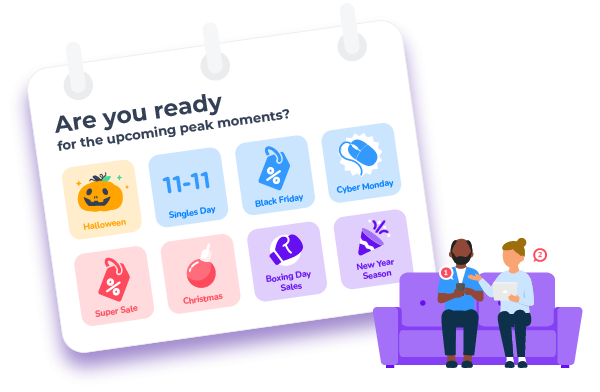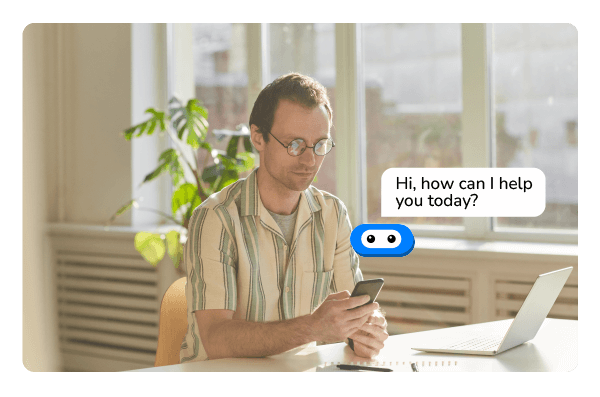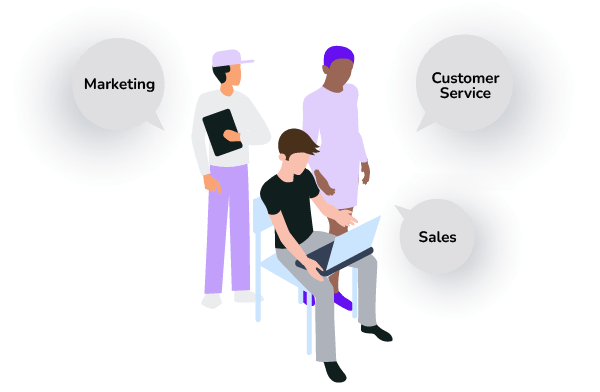- Marketing Challenges in the Countdown to Q4
- Challenge 1: A Stampede of Competitors
- Challenge 2: Advertising Costs Going to the Moon
- Challenge 3: Inventory and Empty Shelf Chaos
- Challenge 4: Consumer Behaviour: Fickle and Flighty
- Challenge 5: The Dawn of a Cookieless World
- Ahead of the Game: Solutions and Tips for Pre-Q4
- Solution 1: Think Different Channels for Campaigns
- Solution 2: Integrate CRM, Stock Data, and Customer Service
- Solution 3: Always Be Engaging: Ongoing Conversations With Customers
- Solution 4: Collect First-Party Data
- Start With Conversational Marketing Before and During Q4
Marketing Challenges in the Countdown to Q4
Of course, every sector has competition. But you’re not just looking at increased competition today; you’re pre-planning for a competitive landscape that isn’t obvious yet. Perhaps new trends and fads will cloud your market by December. Or the CPCs for your Google Ads are skyrocketing. Or you expect 2,000 orders, but they’ll all come on the same day.

All of the above are addressable with the right tools. Here are the challenges they address:
Challenge 1: A Stampede of Competitors
You’re boosting the marketing budget during the high season, but so is everybody else. And you’re all chasing the same customers with the same messages. Search makes it simple for them to compare you against the rest – making for killer price wars. Every marketer is running hard just to stand still; there’s no solution but to splurge out more campaigns, emails, text, and display ads.Or is there?
Of course, it's tempting to cast your net as widely as possible because that’ll gain the biggest audience. The trouble is, the biggest may not mean the best – and here’s your opportunity.
Go back to basics and look at your brand values. What’s your USP, your key differentiator that distinguishes your typical customer from the average? Market to that specific niche or trait, and you’ll attract the most engaged audience – not for all products, but for your product, on the one-to-one channels they use.
Challenge 2: Advertising Costs Going to the Moon
Even in a world of 8.5bn searches a day, ad inventory (the number of opportunities to get an ad in front of eyeballs) is limited. And in eCommerce peak season, more advertisers are bidding for it, driving your ad spend out of control.
Your budget’s rising to the sky – but the game is a race to the bottom.
Targeted offers to your niche carry their own set of “long tail” search words, letting you slip your messages into the market at a lower cost. But ROI (Return On Investment) can be underwhelming here: while clickthrough rates vary by audience, it’s rare to see quality clicks above 5% or CPCs below a buck. The real magic – what we care about at CM.com – happens between the click and the conversion.
What if, instead of a sales page, you could send the prospect straight to a chat window, ready to talk one-to-one with a customer service agent or chatbot? Engaging them immediately, ready for nurturing down the sales funnel over a connected set of interactions. It’s a smarter way to convert because you’re controlling the conversation.

Challenge 3: Inventory and Empty Shelf Chaos
When are a million new orders bad news? When you’ve only got half a million SKUs in your warehouse. It’s the bane of any marketer’s life: an unusually successful campaign should be cause for pay rises and promotions, but if demand isn’t matched with supply, all you’ll get is disappointed customers.
That’s why successful peak moment marketing has to connect across silos. Supply chain schedules, stocking levels, order processing, and campaign management: the trick is balancing different parts of the business so the Q4 finals are as good as they can be without any seam bursting. Fortunately, there are ways to do it.
Challenge 4: Consumer Behaviour: Fickle and Flighty
The customer journey isn’t a series of milestones; it’s more like a map of opportunities. They may enter the buying journey on a search page, research you at Trustpilot, and dive straight into a chatbot conversation when they hit your site. And at peak moments, you may see a thousand of them every minute.
The key here: in Q4, the shopping motivation – seasonal gifts and treats – is shared by all. (Unlike other seasons.) This means that if you can answer their goals with the right offer at the right time, you can shortcut a drawn-out customer journey into a few minutes of communication. And the more personal that communication, the likelier they’ll buy.
So don’t limit your thinking to email promotions: maybe WhatsApp and a personalised chatbot are in your high-season marketing future.
Challenge 5: The Dawn of a Cookieless World
In times past, third-party cookies made it straightforward to follow customers across the web – but client-side cookies (and the laws that govern them) are changing. Many browsers no longer allow them; at the end of 2024, the traditional tracking cookie will be history.
Its most significant impact on reputable eCommerce marketers is the need for more data. Understanding how people arrived at your site, what they did before, and where they’re going, after all, affects your analytics and insights. But once again, shifting your mindset – don’t think sites, think channels – can help. It’s not about who visited your site but how easy it was to start a conversation and continue it across your customer’s preferred channels.

Ahead of the Game: Solutions and Tips for Pre-Q4
So what are these alternative solutions all about? They involve platform thinking, an anti-silo approach, and innovative channels other marketers may not have twigged yet. Above all: use them together for greater impact. Here’s a taste.
Solution 1: Think Different Channels for Campaigns
As you’ve heard, chatty channels like WhatsApp, Facebook Messenger, and others now offer business advertising options, which is also known as conversational marketing – opted-in and rules-compliant. So before you splash out your next £1m on Google Ads (including that double-digit Q4 premium), look at what you could do with your existing database of prospects and creative thinking … with direct messaging.
As yet, these peak-season marketing channels are below the radar of most marketers, so you’re in a less saturated environment. And remember, with these channels, you’re opening up a conversation straightaway – nudging the sale along much faster. The time is here for conversational marketing and engaging with customers via their favourite channels.
Solution 2: Integrate CRM, Stock Data, and Customer Service
The next win for eCommerce peak season is to think platform, not apps. A cloud-based marketing campaign tool that connects data from multiple sources across silos is ideal for balancing supply with demand, campaign delivery with warehouse scheduling, and customer service with marketing follow-up.
And because it’s available to everyone who needs it, it brings your people together, too. Are sales and Marketing professionals talking excitedly to Operations experts? What a concept.

Solution 3: Always Be Engaging: Ongoing Conversations With Customers
The cookie is fading, but insights emerge when you connect the dots of your customer data. So don’t look to replace cookies: adopt a different approach based on a personal connection, not a mass audience.
Don’t ask them what they think of your service … ask them what they thought about the specific question they asked your AI chatbot on 5th December. When you compare and contrast their answers with data about conditions in the Service Department that day, you’ll see patterns and problems worth solving.
Solution 4: Collect First-Party Data
As we mentioned before, the cookieless world is on the rise. This means that it is essential to have direct access to first-party customer data. Create a first-part data strategy that collects customer insights via your website, app, or other channels. By doing so, you can gain valuable insights into your customers’ behaviour, preferences, and needs without relying on third-party platforms.
Data you collect can be stored in a customer data platform connected with other systems, such as your marketing campaign tool. In the end, you can personalise your marketing efforts and improve your overall customer experience. Control your communication channels, communicate directly with your target audience, and build stronger relationships all based on first-party data.
Start With Conversational Marketing Before and During Q4
As you’d guess, CM.com is at the forefront of using these new channels creatively – with integrated solutions like our Mobile Marketing Cloud, you can start with conversational marketing and engage with customers on a whole other level. And it’s never more useful than in peak eCommerce times like Q4.
After all, marketing – the process of engaging and retaining a customer – is ultimately personal. And the more personal the channel, the greater your opportunity.
